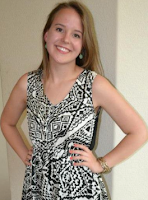I have learned
several things about customer insights and the business model throughout the
course of this group project. One concept, in particularly, that I have gained
a better insight on is the importance of visualization. According to the textbook Designing for Growth, “visualization is
the transformation of information into images that you see, either literally
with your eyes or figuratively with your mind’s eye.” This is a concept that
was not only applied throughout the various steps of the group project, but
also in the blogs as well. Visualization played a key role when designing our
prototype. Through the use of Photoshop, we were able to develop a mock-up of
what our mobile application would look like. This not only helped our group
understand the practicality of our mobile application, but also helped the
audience visualize the concept in our presentation. This group project has helped me understand the
importance of visualization and the power of influence that it can have in
enhancing a certain idea.
Another skill that
this group project helped me develop was the creation of detailed customer
personas and understanding the importance of this. When doing past projects in
which I would have to provide information about a particular target market, I
would tend to focus on the traditional segmentation approach. This would focus
on demographic, behavioral, and psychographic characeteristics. Though this provides useful
information, it seems to never develop past surface level. I found the use of
the empathy map extremely helpful when trying to understand more about our
target customer segment. For example, the empathy map helped me to gather more personal information about the pains and gains that this customer goes through everyday. The detailed nature of this group project gave me the
opportunity to explore more and really understand our customer persona, which
in our project were gay couples. Through different activities and personal
interviews I began to develop richer insight, something different from past
projects that I have been a part of.
I do not believe
there was one part of the project that did not provide value overall. However,
one part that I thought was repetitive was in the development of the customer persona. Since
no person in our group fit our customer persona, we initially tended to focus
more on stereotypes than factual information. After conducting research through
various activities and really getting to communicate with our target segment
through personal interviews, we found ourselves having to change a lot of false
information from our initial customer persona. For example, in our original persona
for gay couples we put a lot of emphasis on involvement in various gay rights
organizations. Come to find out, this was not the case at all. I believe this
is one area that we could have initially left out and conducted at the end our
research.
Overall, I had a
great experience with this project. At times, I could not see the whole picture
and how the different phases fit together. With that being said,
everything made sense at the end. One of the most frustrating parts for me in
this project and probably throughout the class, was the often vague and broad
instructions. I’m so used to having a strict set of guidelines to adhere to in
various assignments, that I really did not know how to react to this freedom.
This proved to be a challenging for me throughout the semester, but helpful in
preparing me for my future career. Throughout my college years, I have never
worked on a team longer than I have with this one. When you spend a whole
semester with the same group of people, within and outside the classroom, you
begin to really know them on a personal level. I have worked on a variety of
good and bad teams throughout my schooling and this was one, if not my
favorite, team that I have been a part of. It just worked! Though we had our
differences at times, at the end of the day everyone put in an equal amount of
work and it was a pleasure to work with them all. As alluded to earlier,
Professor Walls challenged me this semester and I believe that is because I have
never had another class like this one. It was very “real-world” and I enjoyed
that. In the group project, I found it useful to bounce off each other’s ideas and share the responsibility. Working on a group project both contributed to my learning and enjoyment
of the material in this course throughout the semester.































